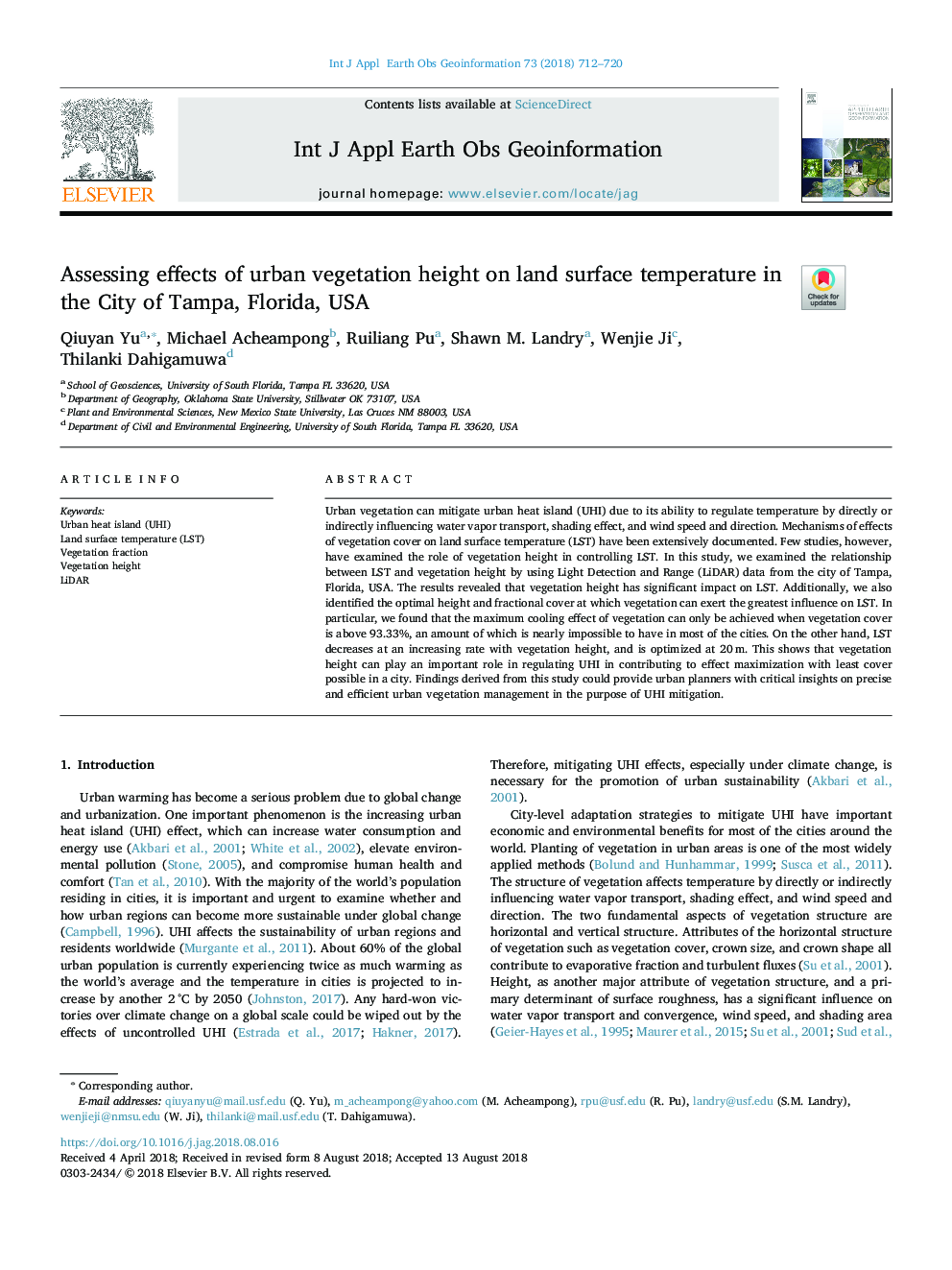| Article ID | Journal | Published Year | Pages | File Type |
|---|---|---|---|---|
| 10115583 | International Journal of Applied Earth Observation and Geoinformation | 2018 | 9 Pages |
Abstract
Urban vegetation can mitigate urban heat island (UHI) due to its ability to regulate temperature by directly or indirectly influencing water vapor transport, shading effect, and wind speed and direction. Mechanisms of effects of vegetation cover on land surface temperature (LST) have been extensively documented. Few studies, however, have examined the role of vegetation height in controlling LST. In this study, we examined the relationship between LST and vegetation height by using Light Detection and Range (LiDAR) data from the city of Tampa, Florida, USA. The results revealed that vegetation height has significant impact on LST. Additionally, we also identified the optimal height and fractional cover at which vegetation can exert the greatest influence on LST. In particular, we found that the maximum cooling effect of vegetation can only be achieved when vegetation cover is above 93.33%, an amount of which is nearly impossible to have in most of the cities. On the other hand, LST decreases at an increasing rate with vegetation height, and is optimized at 20âm. This shows that vegetation height can play an important role in regulating UHI in contributing to effect maximization with least cover possible in a city. Findings derived from this study could provide urban planners with critical insights on precise and efficient urban vegetation management in the purpose of UHI mitigation.
Keywords
Related Topics
Physical Sciences and Engineering
Earth and Planetary Sciences
Computers in Earth Sciences
Authors
Qiuyan Yu, Michael Acheampong, Ruiliang Pu, Shawn M. Landry, Wenjie Ji, Thilanki Dahigamuwa,
